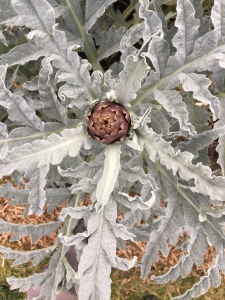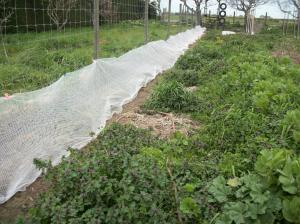The garden group I’m part of recently met at our house and took a stroll through our gardens. It was great to get ideas and advice on disease problems, nutrient deficiency issues, and all manner of other aspects of gardening.
But equally valuable was to get their perspective on the changes that have taken place in our garden over the past year. We see the place daily and don’t always appreciate how much real progress we’re making on bringing this degraded paddock back to life.
So I thought today I’d look back and do a little before/after comparison, to remind me of what all our hard work has wrought here over the past 3 years or so.
When we bought the property, there was nothing but poorly-growing pasture grass and weeds. The developer had scraped every bit of topsoil off, leaving us with heavy clay and rocks. When we had the soil tested, we found there were virtually no nutrients in it at all. Truly a blank slate. Or first attempts at growing vegetables here yielded shin-high corn plants. The tomatoes, peppers and eggplants stopped growing the moment I planted them out.
Before we even moved in, we began to plant natives around the edges of the property. The fruit trees went in during our first winter in the house, as did the roses. We bought literal truckloads of compost to add to the soil, and I’ve incorporated trailer loads of manure gifted by generous neighbours with livestock. And I can’t count the number of bales of pea straw I’ve layered over garden beds over the past three years. We picked rocks of all sizes from the ground every time we dug a hole or planted a seed. Those rocks have formed the edges of raised beds, filled gabions and created paths all over the property.
The results have been transformative. See for yourself.

































